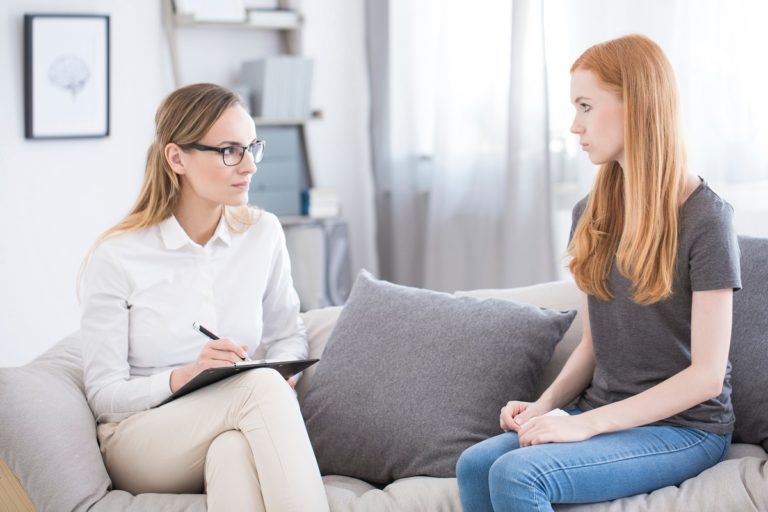Phobias — they’re so common yet a little mysterious. We normally attach them to traumatic experiences. For example, if someone is claustrophobic, which means they fear enclosed spaces, we’d assume they had been trapped in an elevator in the past, locked up in a closet, or such. But strangely, not all claustrophobic people have experienced something horrific in an enclosed space.
Yet their phobias can be very intense that the medical industry itself has made adjustments for them. If they ever needed a brain scan, they can be put under an innovative open MRI scanner instead of the traditional encapsulated one.
Fear of heights, fear of needles, and fear of social situations are quite common, too. Social phobia, in particular, can be so serious and develop into a full-blown social anxiety disorder. Other phobias may also evolve into mental disorders, especially if traumas cause them.
However, some people can indeed develop phobias out of nowhere. They’re often children and adolescents, but a few adults experience it too. In that case, are their phobias real? How will they treat it?
The Source of Phobias
Life experiences, your personality, and the people around you may contribute to your developing a phobia. But research also found that some degree of specific phobias is learned. Below are the three main learning scenarios that may increase your likelihood of developing a phobia:
- Modelling, in which you saw other people get terrified in a specific situation or around a certain object or animal. It means the fear was “modelled” in front of you, so you learned to fear the same thing.
- Hearing or reading a scary story involving an object or an animal. For example, your parents constantly told you to stay away from rats because they’ll make you sick. That teaches you that all rats carry diseases and thus should be feared.
- Direct conditioning, in which you’ve had a frightening experience with a particular object, animal, or situation. Examples of this are getting bitten by a dog, falling from a high place, and getting swept up by the current of a river or ocean. These experiences can be traumatic, so children may feel terrified if they find themselves in a similar situation again.
Learned phobias are as real as the phobias developed from traumas. You shouldn’t call your specific fear irrational just because it isn’t caused by trauma. But unlike people with traumatic experiences, you may be able to cure or reduce your phobia without psychological treatment. Some research suggests that optimism may help protect you from your fear. If you see the world from a positive perspective, you may decrease the impact of your learned anxieties and fears.
Common Phobias
There are over 40 known phobias, but only around ten are most common. These include:
- Arachnophobia: fear of spiders and other arachnids
- Ophidiophobia: fear of snakes
- Cynophobia: fear of dogs
- Acrophobia: fear of heights
- Aerophobia: fear of flying
- Astraphobia: fear of thunder and lightning
- Trypanophobia: fear of injections
- Social phobia: social anxiety disorder
- Agoraphobia: fear of being alone in situations or places where escaping may be difficult (e.g., crowded or open spaces)
- Mysophobia: fear of germs and dirt; can be related to obsessive-compulsive disorder (OCD)
These phobias are common because heights, spiders, snakes, dogs, etc., are fears that children easily learn. But agoraphobia, in particular, can be developed by people with panic disorder. Social phobia, meanwhile, can be a result of a lack of confidence, especially in teens. If they have been bullied or have trouble making friends, they can have higher chances of developing social phobia.

Unusual Phobias
Some people’s fears are so strange that they’re almost ridiculous. But like common phobias, unusual phobias also result from experiences or situations in which something terrifying or uncomfortable happened. Below are some of the unusual phobias known:
- Alliumphobia: fear of garlic
- Phobophobia: fear of developing a phobia
- Ablutophobia: fear of bathing or cleaning
- Dextrophobia: a form of OCD that makes you afraid of having objects to your right
- Siderophobia: fear of stars
- Arithmophobia: fear of numbers
- Logophobia: fear of reading or learning how to read
- Plutophobia: fear of money or the chance of getting rich
Treating Phobias
Avoiding your triggers may prevent anxiety or panic attacks, but it won’t help in the long run. It’s better to try to work out the cause of your specific fear, but if you really can’t explain your phobia, seeking professional help is the way. Cognitive behavioural therapy, exposure therapy, hypnotherapy, and prescription drugs are some of the most effective treatments for phobias.
In time, you will have to face your fears. This can be nerve-wracking, but trust yourself and believe that you are courageous and bigger than your fears. If your fears bloomed in you easily, as if out of nowhere, you should be able to expel them.

